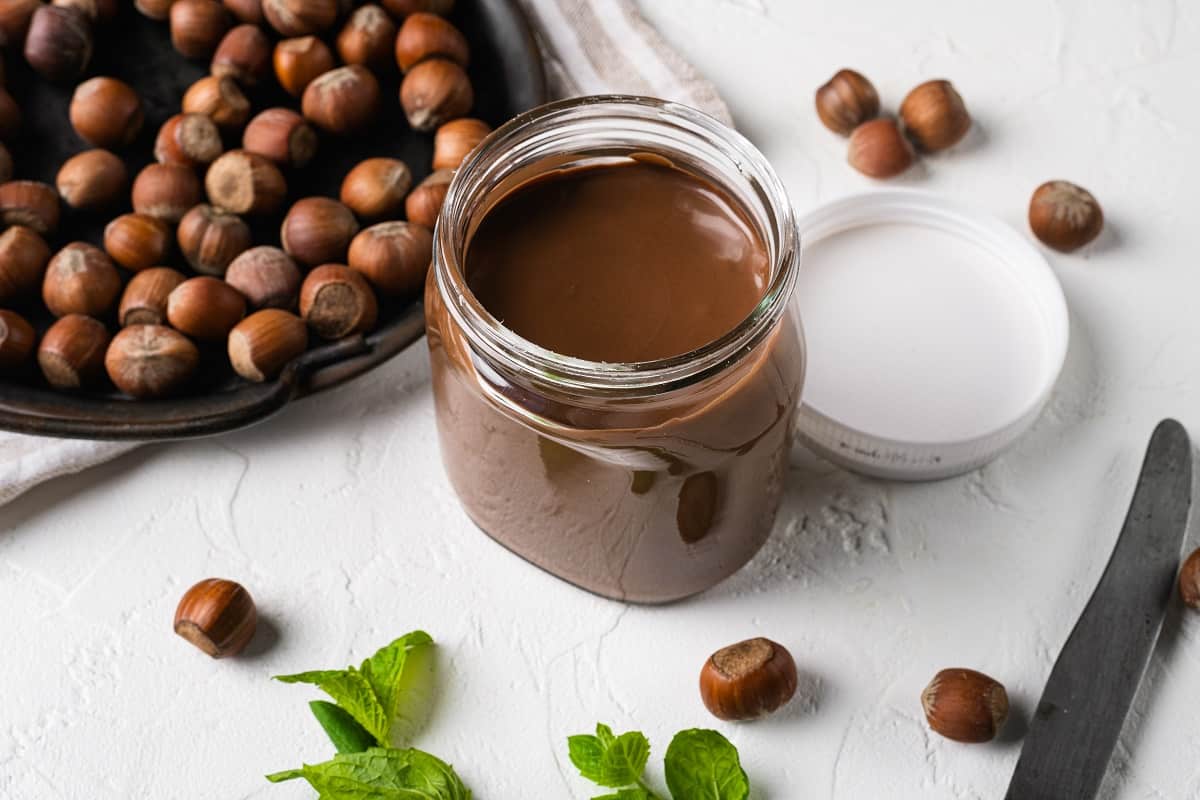Both gianduja and nutella contain chocolate and hazelnuts, and their origins are somewhat similar. However, nutella and gianduja have different ingredients, manufacturing processes, taste and texture, and quite different histories.
I'd even argue that their flavors and uses are quite different, as you'll see in the comparison chart below.

Nutella vs. Gianduja (Chart)
Following WWII, food rationing was implemented throughout Europe, and the cost of importing cacao was extremely high. This prepared the way for Pietro Ferrero, who created Nutella in the 1940s.
Following the 70% hazelnut and 30% chocolate recipe of gianduiotto, the Italian pastry master (of Rocher renown) created individually wrapped solid loaves, originally known as pasta gianduja. These loaves were meant to be a less expensive version of gianduja, itself created out of wartime necessity.
| Gianduja | Nutella | |
|---|---|---|
| Texture | Dense and paste-like; melts in your mouth | Creamy and easily spreadable |
| Flavor | More delicate and rich in hazelnut, with a smooth chocolate flavor | Very sweet with a lighter hazelnut flavor |
| Hazelnut Content | Up to 20-55% hazelnuts, often using premium local Italian hazelnuts | Approximately 13% hazelnuts, sourced globally |
| Cacao Content | Higher, around 32% cacao liquor | Almost no cacao content |
| Origin | Traditional, dating back to the Napoleonic era | Invented in the 1940's by Pietro Ferrero |
| Production Method | Traditional grinding and refining of whole roasted cacao beans and hazelnuts | Modern industrial processes for mass production |
| Intended Use | Often used in premium chocolates and confections | Marketed as a breakfast and snack spread |
| Availability | Specialty stores, quite a bit more expensive | Widely available, more affordable |

Nutella vs. Gianduja History
Traditional gianduia is denser and more delicate in flavor than Nutella, because it's limited to 20% hazelnuts and 32% cacao liquor. It's also made more traditionally, by grinding and refining entire roasted cacao beans and hazelnuts with sugar and cocoa butter.
However in the 1940's, Pietro made his concoction with molasses, hazelnut oil, coconut butter, and a trace of chocolate, then made tiny loaves out of them and wrapped them in wax paper.
The loaves didn't last long, and Ferrero eventually produced a cheaper version to stretch the high cost of ingredients and make it more shelf-stable. It was a smoother, more spreadable paste, which was sold in jars under the name Supercrema Gianduja.
In 1964, the spread was renamed Nutella. In the years since, many Nutella desserts and variations have emerged, spreading the sweet treat across the world.
Today, Nutella remains a sweet chocolate hazelnut spread that’s easily spreadable and contains only 13% hazelnuts. However it's now prepared using hazelnuts from all over the world, as opposed to gianduja, which uses primarily Italian hazelnuts and a large portion of cacao.

















Comments
No Comments